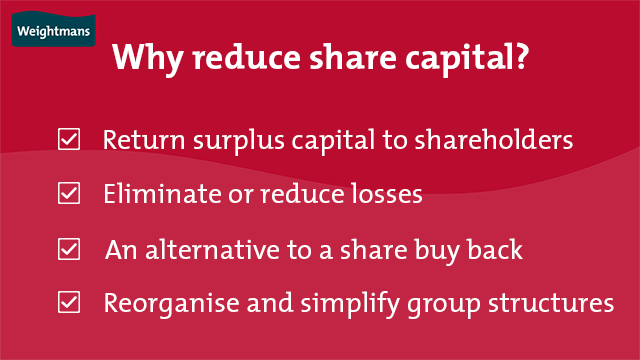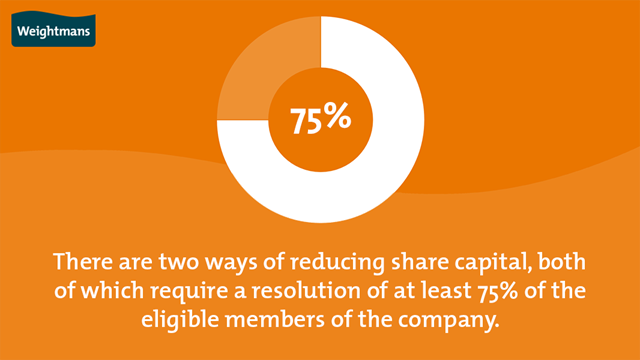


A solvency statement can be a useful tool to reduce share capital. But what is a solvency statement and why should you reduce share capital?
We are seeing an increasing trend of client companies seeking to reduce their share capital using the solvency statement procedure introduced by the Companies Act 2006.
As such, we thought it would be useful to provide a refresher of the simplified process for reducing share capital by way of a solvency statement and the considerations which directors must make when they provide the statement.
There are various commercial reasons for a company to reduce its share capital, such as:

The Companies Act 2006 prescribes two ways for a company to reduce its share capital, both of which require a resolution of at least 75% of the eligible members of the company (special resolution), which are:
The solvency statement procedure is only available to private companies and the company must not be prohibited from reducing its share capital by its articles of association.
 of the company" width="640" height="360" />
of the company" width="640" height="360" />
A solvency statement is a statement in writing signed by all directors which states that, as regards the company's situation at the date of the statement:
The statement should not be made more than 15 days before the date of the passing of the shareholder’s special resolution.
The Companies Act 2006 states that if the directors make a solvency statement without having reasonable grounds for the opinions expressed in it, an offence is committed by every director who is in default which can lead to imprisonment and/or a fine.
It is therefore important that directors are aware of the financial status of the company so they can make a considered decision on whether to provide the solvency statement.
As stated above, the solvency statement procedure is only available to private companies and therefore public companies must use the court-approved procedure in order to reduce their share capital.
The procedure may not always be the appropriate method for carrying out a reduction of capital in private companies, particularly when all of the directors are not willing to sign the solvency statement or when the directors would prefer the comfort of obtaining court approval if there is the possibility of an objection to the reduction from creditors.
The solvency statement procedure for reducing share capital introduced for private companies under the Companies Act 2006 is a simpler and more cost-effective procedure for private companies seeking to reduce share capital than the court-approved procedure.
Directors who provide solvency statements should do so only after taking into account all the company's liabilities for at least the next 12 months otherwise they run the risk of committing an offence under the Companies Act 2006.
Catherine specialises in a broad range of corporate work including mergers and acquisitions, share and asset acquisitions and disposals, management buyouts and management buyins, debt and equity investment work, group reorganisations and restructures, shareholders agreements, joint ventures and general company and commercial advice.

If your company is considering carrying out a reduction of capital, or you are a director who is being asked to provide a solvency statement, and you require further advice or guidance, please contact our company law solicitors.
Did you find this article informative? Would you like to receive more, or just leave us some feedback and suggestions?